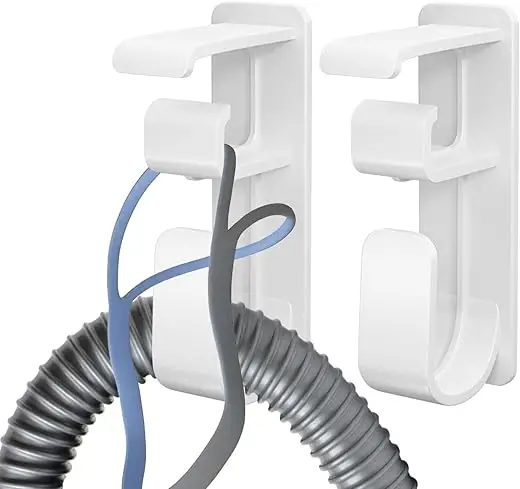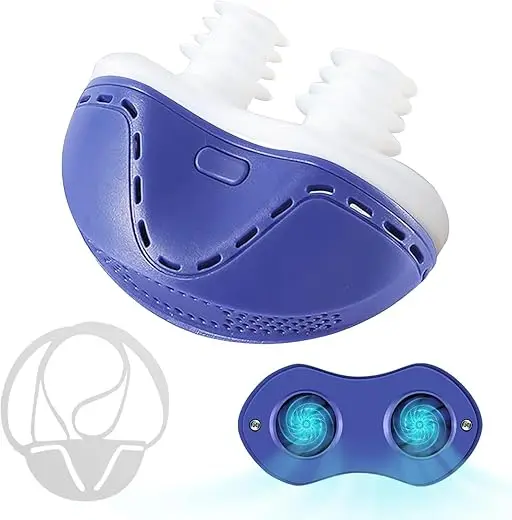Quick Answer: The Mortality Facts
Untreated severe sleep apnea increases the risk of death by 3-5 times compared to people without the condition. Studies show that approximately 38% of people with untreated severe sleep apnea die within 10-15 years, with most deaths occurring from cardiovascular causes between midnight and 6 AM. However, with proper treatment (CPAP therapy), the death rate drops to nearly normal levels – around 7% at 10 years.
Sleep apnea kills people every single day, yet most deaths are preventable with proper treatment. This comprehensive guide reveals exactly how often sleep apnea causes death, who’s at highest risk, when deaths typically occur, and most importantly, how treatment dramatically changes these sobering statistics.
The Raw Numbers: Sleep Apnea Mortality Statistics
Overall Death Rates
Population-Level Impact:
- 38,000 deaths annually in the US directly attributed to sleep apnea
- 150,000+ deaths where sleep apnea is a contributing factor
- 1 in 5 adults has sleep apnea
- 80% remain undiagnosed and untreated
- Preventable deaths: 90% with proper treatment
Death Rate by Severity:
- Normal population: 1-2% annual mortality
- Mild sleep apnea: 2-3% annual mortality
- Moderate sleep apnea: 3-5% annual mortality
- Severe sleep apnea: 6-8% annual mortality
- Very severe (AHI >60): 10-12% annual mortality
Timeline to Death
Cumulative Mortality Risk (Untreated):
5 Years:
- Mild: 5-7% mortality
- Moderate: 10-15% mortality
- Severe: 20-25% mortality
10 Years:
- Mild: 10-15% mortality
- Moderate: 20-30% mortality
- Severe: 35-40% mortality
15 Years:
- Mild: 20-25% mortality
- Moderate: 35-45% mortality
- Severe: 50-60% mortality
Life Expectancy Reduction:
- Mild OSA: 3-5 years
- Moderate OSA: 7-10 years
- Severe OSA: 12-15 years
- Without treatment: Up to 20 years lost
How Sleep Apnea Kills: The Mechanisms
Sudden Cardiac Death (Most Common)
Frequency: 40% of OSA deaths
The Fatal Timeline:
- 2-4 AM: Peak risk period
- Apnea event drops oxygen below 60%
- Heart rhythm becomes unstable
- Ventricular fibrillation develops
- Cardiac arrest within minutes
- Death if not immediately resuscitated
Risk Multiplication:
- General population: 0.1% annual risk
- Severe OSA: 0.5-1% annual risk
- OSA + heart disease: 2-3% annual risk
- OSA + previous heart attack: 5% annual risk
Stroke Deaths
Frequency: 25% of OSA deaths
How Often:
- 4x higher stroke risk with OSA
- 60% of stroke patients have OSA
- 15-20% of strokes are fatal
- OSA strokes more likely fatal
- Night/early morning timing common
Fatal Stroke Pattern:
- Hemorrhagic more common in OSA
- Larger stroke area
- Poorer recovery
- Higher recurrence
- Earlier death post-stroke
Heart Failure Deaths
Frequency: 20% of OSA deaths
Progressive Timeline:
- Year 1-3: Hypertension develops
- Year 3-5: Left ventricular hypertrophy
- Year 5-8: Diastolic dysfunction
- Year 8-12: Systolic dysfunction
- Year 12+: End-stage heart failure
Death Rate:
- Heart failure alone: 50% 5-year mortality
- Heart failure + OSA: 70% 5-year mortality
- Treated OSA: Returns to 50%
Accident-Related Deaths
Frequency: 10% of OSA deaths
Motor Vehicle Accidents:
- 7x higher accident risk
- 2.5x higher fatality rate
- 1,500 traffic deaths annually
- Peak times: morning commute, after lunch
- Commercial drivers especially at risk
Workplace Fatalities:
- 2-3x higher rate
- Heavy machinery accidents
- Falls from height
- Industrial accidents
- Medical errors (healthcare workers)
Other Causes
Frequency: 5% of OSA deaths
Including:
- Pulmonary embolism
- Respiratory failure
- Diabetic complications
- Cancer (accelerated by OSA)
- Suicide (depression-related)
- Medication interactions
Who Dies from Sleep Apnea: Risk Stratification
Highest Risk Groups
The “Death Zone” Profile:
- Male, age 50-70
- Severe OSA (AHI >30)
- Obesity (BMI >35)
- Untreated/poor compliance
- Existing heart disease
- Death risk: 15-20% within 5 years
Young High-Risk:
- Age 30-50
- Very severe OSA (AHI >60)
- Morbid obesity (BMI >40)
- Resistant hypertension
- Family history of sudden death
- Death risk: 10-15% within 5 years
Gender Differences
Men:
- 2-3x higher death rate
- Earlier age at death (average 58)
- More sudden cardiac deaths
- Higher severity at diagnosis
- Poorer treatment compliance
Women:
- Deaths increase post-menopause
- Average death age 65
- More stroke-related deaths
- Often underdiagnosed longer
- Better treatment compliance
Age-Specific Death Rates
Young Adults (20-40):
- Annual death rate: 0.5-1%
- Mainly accidents and sudden cardiac death
- Often undiagnosed
- Preventable with early treatment
Middle Age (40-60):
- Annual death rate: 2-5%
- Cardiovascular deaths predominate
- Peak risk period
- Treatment most beneficial
Elderly (60+):
- Annual death rate: 5-10%
- Multiple causes
- Faster progression
- Comorbidities compound risk
When Death Occurs: Timing Patterns
Time of Day
The Deadly Hours (Midnight-6 AM):
- 46% of OSA deaths occur
- vs. 21% in general population
- Peak: 3-5 AM
- REM sleep vulnerability
- Longest apnea events
Why Night Is Dangerous:
- Circadian blood pressure dip lost
- Parasympathetic/sympathetic imbalance
- Platelet aggregation peaks
- Fibrinolysis lowest
- Emergency response delayed
Day of Week
Monday Phenomenon:
- 20% higher death rate Mondays
- Work stress + poor weekend sleep
- Alcohol Sunday night
- Disrupted routine
- Delayed medical care
Seasonal Patterns
Winter Months:
- 15% higher death rate
- Respiratory infections
- Holiday weight gain
- Alcohol consumption
- Delayed medical care
The Treatment Effect: How CPAP Changes Everything
Mortality Reduction with Treatment
CPAP Compliance (>4 hours/night):
- 70-80% reduction in death risk
- Cardiovascular deaths nearly normalized
- Accident risk eliminated
- Stroke risk reduced 60%
- Life expectancy restored
Comparison at 10 Years:
- Untreated severe OSA: 38% mortality
- Partial CPAP use: 15% mortality
- Good CPAP compliance: 7% mortality
- General population: 5% mortality
Timeline of Risk Reduction
Immediate (Week 1):
- Accident risk drops 50%
- Sudden death risk decreases
- Blood pressure improves
Short-term (3 months):
- Cardiovascular risk dropping
- Stroke risk decreasing
- Metabolic improvements
Long-term (1+ years):
- Mortality risk approaching normal
- Organ damage halting
- Life expectancy extending
Real-World Death Scenarios
Case Studies: Learning from Tragedy
The Executive, 52:
- Severe OSA diagnosed, CPAP prescribed
- Used occasionally, “couldn’t get comfortable”
- Fatal heart attack 3 AM, 18 months later
- Lesson: Partial compliance isn’t enough
The Truck Driver, 45:
- Undiagnosed despite snoring for years
- Fell asleep driving, head-on collision
- Fatal for him and other driver
- Lesson: Occupational screening critical
The Athlete, 38:
- Fit, dismissed snoring as “normal”
- Sudden cardiac death during sleep
- Severe OSA found on autopsy
- Lesson: Fitness doesn’t prevent OSA
Preventing Death: Your Survival Strategy
Immediate Actions If You Have OSA
Non-Negotiable Steps:
- Use CPAP every night, all night
- Never drive drowsy
- Avoid alcohol completely
- Sleep on your side
- Lose weight if overweight
- Monitor blood pressure
Getting Diagnosed Before It’s Too Late
Death Risk Indicators:
- Witnessed apneas
- Gasping/choking at night
- Excessive daytime sleepiness
- High blood pressure
- Family history of OSA/sudden death
Don’t Wait If:
- Partner scared by your breathing
- Falling asleep driving
- Chest pain at night
- Morning headaches
- Uncontrolled blood pressure
The Economic Cost of OSA Deaths
Individual Impact
Lost Earnings:
- Average age at death: 58
- Lost working years: 7-10
- Lifetime earnings lost: $500,000-1,000,000
- Family financial devastation
Medical Costs:
- End-of-life care: $50,000-200,000
- ICU stays: $10,000/day
- Funeral expenses: $10,000-15,000
- Total family burden: $250,000+
Societal Impact
Annual U.S. Costs:
- Direct deaths: $3.8 billion
- Lost productivity: $15 billion
- Medical care: $30 billion
- Accidents: $16 billion
- Total: $65 billion annually
Global Death Statistics
Worldwide Impact
Deaths by Region:
- North America: 45,000/year
- Europe: 40,000/year
- Asia: 100,000/year (underestimated)
- Global total: 200,000+/year
Underreporting Issues:
- Death certificates rarely list OSA
- Attributed to “heart disease” or “stroke”
- Developing countries lack data
- True toll likely 2-3x higher
Special Populations: Unique Death Risks
Pregnant Women
Maternal Mortality:
- 5x higher with OSA
- Preeclampsia deaths
- Cardiovascular complications
- Peripartum cardiomyopathy
- Treatment reduces risk 70%
Children
Pediatric Deaths:
- SIDS risk increased
- Growth hormone deficiency
- Developmental delays
- Rare but preventable
- Early treatment critical
Commercial Drivers
Occupational Deaths:
- 5x higher accident rate
- Multi-fatality risk
- DOT screening mandated
- Treatment monitoring required
- Career-ending if untreated
The Hope: Treatment Success Stories
Lives Saved
The Engineer, 48: “Severe OSA, AHI 65. Started CPAP immediately. Five years later, all cardiac markers normal. Doctor says I added 15 years to my life.”
The Teacher, 55: “Nearly died from heart attack. OSA discovered in hospital. Three years on CPAP, cardiologist amazed at improvement. Death sentence commuted.”
The Pilot, 42: “FAA medical flagged OSA risk. Treatment started before symptoms severe. Probably saved my life and passengers.”
Taking Action: Your Personal Death Prevention Plan
Risk Assessment
Calculate Your Risk:
- Severe OSA: +5 points
- Male: +2 points
- Age >50: +2 points
- BMI >35: +2 points
- Heart disease: +3 points
- Untreated: +5 points
Score Interpretation:
- 0-5: Low risk (but not zero)
- 6-10: Moderate risk (action needed)
- 11-15: High risk (urgent action)
- 16+: Extreme risk (emergency)
Immediate Steps
If High Risk:
- Call doctor today
- Expedite sleep study
- Start CPAP immediately when prescribed
- No driving if sleepy
- Sleep sitting up if necessary
- Have emergency plan
Long-term Survival
Staying Alive:
- CPAP compliance >6 hours nightly
- Regular medical monitoring
- Aggressive risk factor management
- Weight loss program
- Cardiovascular screening
- Never skip treatment
The Bottom Line: Death Is Optional
The statistics are clear and sobering: untreated sleep apnea kills frequently and prematurely. But here’s the equally clear truth: these deaths are almost entirely preventable.
The Choice:
- Untreated severe OSA: 38% dead within 10 years
- Treated severe OSA: 93% alive and thriving
Sleep apnea doesn’t have to be a death sentence. With proper diagnosis and treatment, people with even severe sleep apnea can live normal, full lives. The difference between life and death is often just a CPAP mask away.
Every night without treatment is a gamble with your life. Every night with treatment is an investment in your future. The statistics show that treatment works. The question isn’t whether sleep apnea can kill you – it’s whether you’ll let it.
If you have sleep apnea or suspect you might, don’t become a statistic. Get tested, get treated, and get on with living. Your life literally depends on it.



